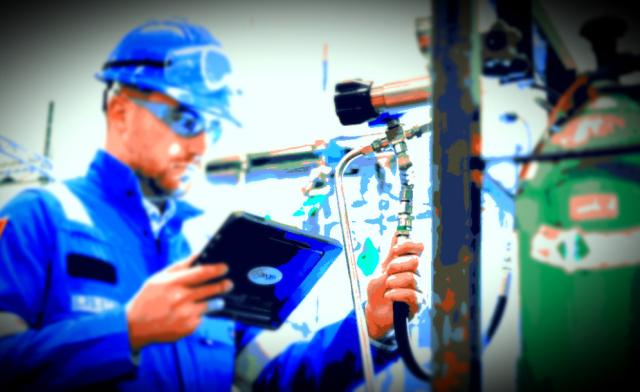
(Source: Swagelok Co.)
[Editor's note: A version of this story appears in the June 2020 edition of E&P. Subscribe to the magazine here. It was originally published June 1, 2020.]
When designing fluid systems for corrosive operating environments, asset owners often follow a standard approach to ensure repeatability and reliability. A design that has performed dependably over time will likely do the same in a new system in the same environment and conditions. Yet, owners also can customize systems and still achieve optimal performance.
Standardization is a requirement for fluid system component manufacturers. Suppliers must adhere to industry standards to ensure compliance with those guidelines. Of course, component repeatability and reliability typically follow.
Consider the American National Standards Institute (ANSI)/NACE MR0175/ International Organization for Standardization (ISO)15156 “Petroleum, Petrochemical and Natural Gas Industries—Materials for Use in H2S-containing Environments in Oil and Gas Production” standard.
This consensus standard is a collaboration of three major standards organizations: ANSI, NACE International and ISO. These parties have agreed on the minimum requirements for selecting and qualifying various alloys to enhance component corrosion resistance.
When manufacturers follow the standard’s metallurgical requirements, components are more likely to resist corrosion and perform reliably. Similar results are expected when manufacturers produce components based on guidelines from other standards organizations such as ASTM International and NORSOK.
Adhering to the standard
The ANSI/NACE MR0175/ISO 15156 standard helps ensure materials used in sour gas environments can reliably mitigate stress corrosion cracking and sulfide stress cracking. Sulfide stress cracking can develop when H2S is present. To produce fluid system components that comply with the standard, manufacturers must use qualified raw materials, test those materials and follow specific manufacturing methods.
When producing components that are compliant with this standard, manufacturers must follow the manufacturing and material property requirements listed in the relevant tables of the standard’s Annex A to optimize the corrosion resistance. Failure to follow the defined material conditions may compromise component performance and life span as well as NACE compliance.
Following NORSOK standards
Similar to NACE standards, the Norwegian petroleum industry’s NORSOK standards outline material and supply chain requirements to ensure component quality. Such provisions include material selection guidelines for specific applications and strict manufacturing protocols. For example, the NORSOK M-650 standard verifies that a manufacturer has sufficient experience with relevant material grades as well as the necessary facilities and equipment to manufacture those materials into components.
Going above and beyond
The industry relies on material standards to provide a level of confidence that a component will perform as stated. However, a standard represents a minimum requirement. A part designed to meet the minimum should perform reliably. Yet, a part that exceeds that minimum should perform even better.
When specifying components made from 316 stainless steel, ASTM A479/A479M-18 “Standard Specification for Stainless Steel Bars and Shapes for Use in Boilers and Other Pressure Vessels” requires the material to have at least 10% nickel and 16% chromium content to mitigate corrosion. Field-testing has shown that 316 stainless steel tubing with elevated elemental concentrations closer to 12% nickel and 17% chromium resists corrosion far better than tubing manufactured to minimum standards. Selecting a better 316 stainless steel grade should enhance system reliability.
To realize the best outcomes, asset owners must ensure their fluid system component suppliers meet industry standards and exceed them, when possible. Practices also should include assurances covering component repeatability and reliability.
Like the very processes outlined in component standards, these qualifications should be a standard part of an owner’s vetting process.
Recommended Reading
SLB’s ChampionX Acquisition Key to Production Recovery Market
2024-04-19 - During a quarterly earnings call, SLB CEO Olivier Le Peuch highlighted the production recovery market as a key part of the company’s growth strategy.
PHX Minerals’ Borrowing Base Reaffirmed
2024-04-19 - PHX Minerals said the company’s credit facility was extended through Sept. 1, 2028.
BP Restructures, Reduces Executive Team to 10
2024-04-18 - BP said the organizational changes will reduce duplication and reporting line complexity.
Matador Resources Announces Quarterly Cash Dividend
2024-04-18 - Matador Resources’ dividend is payable on June 7 to shareholders of record by May 17.
EQT Declares Quarterly Dividend
2024-04-18 - EQT Corp.’s dividend is payable June 1 to shareholders of record by May 8.





